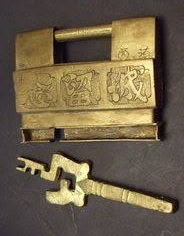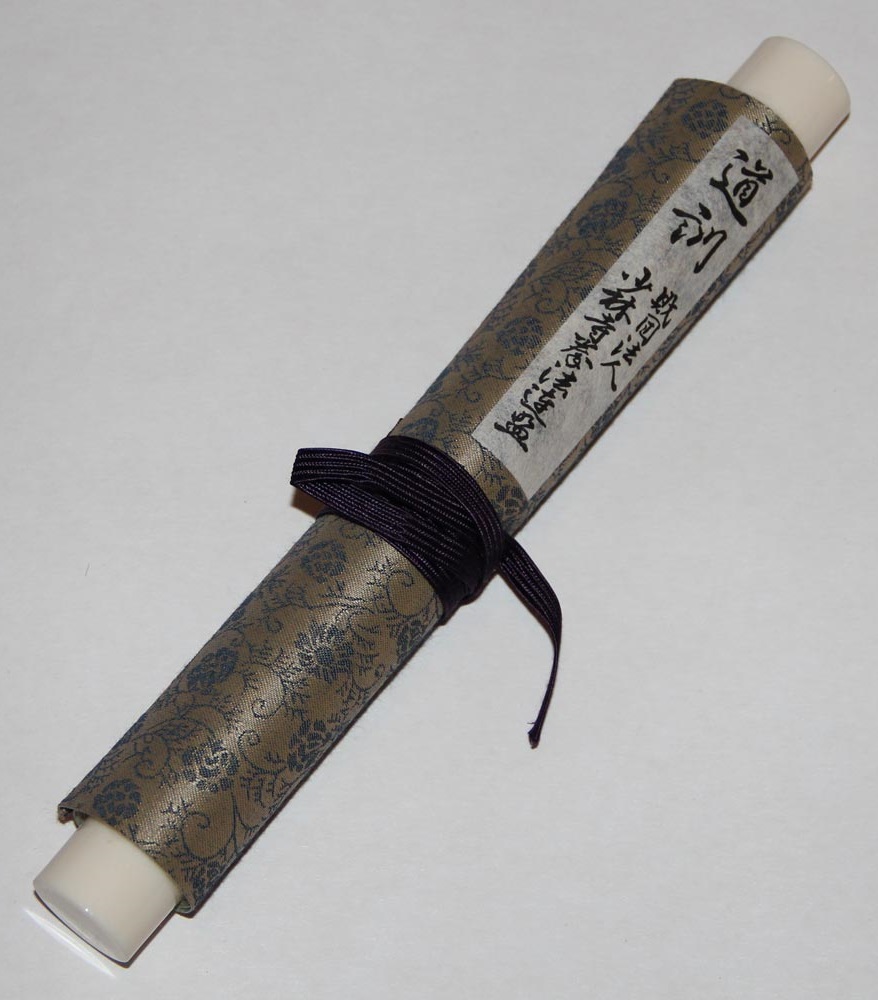Heian Sandan Description
After bowing and announcing the name of the kata ("Heian Sandan") ...
Yōi (cross open hands at groin level in
musubi dachi) and kiyomeri kokyū
(purification breaths)
Kamaete (shift right foot into nami heikō dachi
while closing hands into fists at knee width)
| 1 | Turn 90 degrees left into hidari neko-ashi dachi with hidari yoko uke | |
| 2 | Draw right foot forward into musubi dachi with migite-ue hasami uke then hidarite-ue hasami uke | |
| 3 | Turn 180 degrees right into migi neko-ashi dachi with migi yoko uke | |
| 4 | Draw right foot forward into musubi dachi with hidarite-ue hasami uke then migite-ue hasami uke | |
| 5 | Turn 90 degrees left into hidari neko-ashi dachi with hidari yoko uke | |
| 6 | Hidari osae uke, then step forward into migi han-zenkutsu dachi with migi nukite zuki and kiai | |
| 7 | Twist the right hand a half-turn counter-clockwise and pull it against the back of the right hip while shifting left into migi han-kōkutsu dachi, then continue turning left and step forward into hidari shikō dachi with hidari yoko kentsui uchi | |
| 8 | Step forward into migi han-zenkutsu dachi with oizuki | |
| 9 | Pivoting on the right foot, turn 180 degrees left into musubi dachi and place the knuckles of both fists against the top of the pelvic bone so that the arms protrude to the side like wings | |
| 10 | Step forward into migi shikō dachi with migi ude uke, then migi yoko zuki chūdan immediately returning the right hand to the right hip | |
| 11 | Step forward into hidari shikō dachi with hidari ude uke, then hidari yoko zuki chūdan immediately returning the right hand to the right hip | |
| 12 | Step forward into migi shikō dachi with migi ude uke, then migi yoko zuki chūdan (this time leaving the arm extended) | |
| 13 | Step forward into hidari han-zenkutsu dachi with oizuki | |
| 14 | Draw right foot forward into nami heikō dachi while maintaining punching position with left hand | |
| 15 | Stepping around with left foot turn 180 degrees left into nami heikō dachi with migi seiken zuki over left shoulder | |
| 16 | Step one shoulder width to the right into nami heiko dachi with migi seiken zuki over right shoulder |
Zanshin yame (by simply moving fists to kamaete
position and facing forward)
Naotte (perform tekagami movement while sliding right
foot into musubi dachi)
Rei (bow)


 When
learning a new kata, it is important to remind
oneself of the adage: "Manabu no tame ni hyakkkai,
jukuren no tame ni senkai, satori no tame ni manga
okonau" (学ぶのために百回、熟練のために千回、悟りのために万回行う.).
A hundred times to learn, a thousand
times for proficiency, ten thousand
repetitions for complete understanding.
A related Okinawan saying is "ichi kata san nen"
(一型三年): one kata three years. Think
of it this way: it takes about 40 seconds to
perform Heian Nidan. So in just ten
minutes per day for only ten days (or twenty minutes a
day for just five days), you can learn the correct
sequences of movements in Heian Nidan.
But to become truly proficient-to be able to perform it
correctly, and with the speed, power, timing, and bushi damashii (samurai spirit) necessary
to make its techniques effective in a real self-defence
situation will take a thousand repetitions, which
equates to 100 days at ten repetitions a day.
And to fully understand and apply all of its principles,
nuances, and variations will take 1,000 days (three
years) at ten repetitions per day.
When
learning a new kata, it is important to remind
oneself of the adage: "Manabu no tame ni hyakkkai,
jukuren no tame ni senkai, satori no tame ni manga
okonau" (学ぶのために百回、熟練のために千回、悟りのために万回行う.).
A hundred times to learn, a thousand
times for proficiency, ten thousand
repetitions for complete understanding.
A related Okinawan saying is "ichi kata san nen"
(一型三年): one kata three years. Think
of it this way: it takes about 40 seconds to
perform Heian Nidan. So in just ten
minutes per day for only ten days (or twenty minutes a
day for just five days), you can learn the correct
sequences of movements in Heian Nidan.
But to become truly proficient-to be able to perform it
correctly, and with the speed, power, timing, and bushi damashii (samurai spirit) necessary
to make its techniques effective in a real self-defence
situation will take a thousand repetitions, which
equates to 100 days at ten repetitions a day.
And to fully understand and apply all of its principles,
nuances, and variations will take 1,000 days (three
years) at ten repetitions per day.